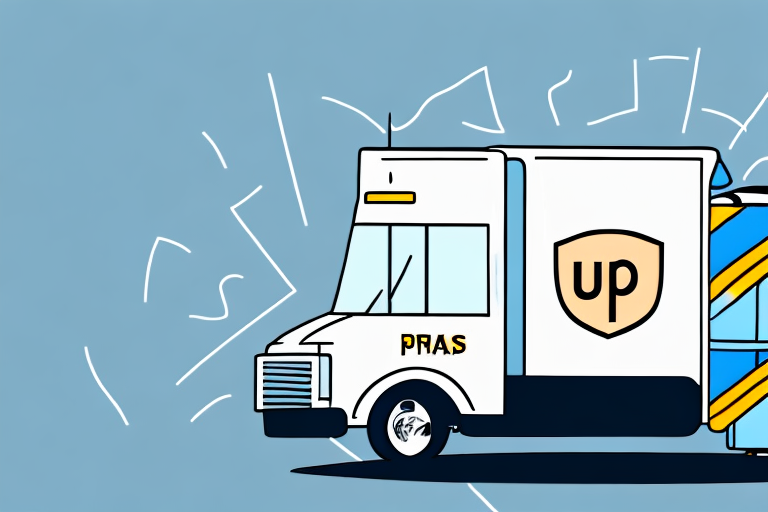Understanding UPS Table Shipping Rates
Shipping is a crucial aspect of any business that sells and delivers products. The cost of shipping can directly impact profit margins and overall customer satisfaction. UPS is one of the most popular shipping carriers, providing reliable and cost-effective shipping solutions to businesses of all sizes. This article delves into UPS Table Shipping Rates, explaining how they work and the factors that influence them.
What Are UPS Table Shipping Rates?
UPS Table Shipping Rates represent the pricing structure offered by UPS for small package shipping. These rates are categorized into two main types: Daily Rates and Retail Rates. Daily Rates are designed for businesses that ship frequently and in bulk, while Retail Rates cater to businesses and individuals shipping fewer than 50 packages daily. Rates are determined based on the package type, weight, dimensions, and destination.
It's important to note that UPS Table Shipping Rates can fluctuate due to factors such as fuel prices, currency exchange rates, and other market conditions. Additionally, UPS provides various discounts and promotions throughout the year, helping businesses and individuals save on shipping costs. Regularly checking the UPS website or consulting with a UPS representative is recommended to stay updated on the latest rates and discounts.
Benefits of Using UPS Table Shipping Rates
- Transparent and Predictable Pricing: Clear rate structures make it easier for businesses to forecast shipping expenses.
- Varied Shipping Options: Multiple shipping choices cater to the diverse needs of individual businesses.
- Fast and Efficient Delivery: Reliable delivery with tracking facilities enhances visibility and customer satisfaction.
- Discounts for Frequent Shippers: UPS offers discounts and special rates for businesses that ship in large volumes.
How Do UPS Table Shipping Rates Work?
UPS Table Shipping Rates are calculated based on several factors, including the package's size, weight, destination, and the required delivery speed. UPS employs a sophisticated algorithm that considers these elements to provide the most efficient and cost-effective shipping solution.
Distance: The distance between the package's origin and destination significantly impacts the shipping rate. Longer distances typically result in higher costs.
Service Type: The chosen service, such as Ground or Air, affects the rate. Faster services like Next Day Air incur higher fees compared to standard ground shipping.
Package Type: Specialized packages, including hazardous materials or oversized items, may require additional handling and incur extra charges.
Factors That Affect UPS Table Shipping Rates
Understanding the factors that influence UPS Table Shipping Rates is essential for making informed shipping decisions:
- Destination: The shipping cost varies based on the distance between the origin and destination.
- Package Dimensions: Larger and heavier packages result in higher shipping costs.
- Delivery Speed: Faster delivery options, such as next-day services, come at a premium.
- Special Requirements: Packages requiring special handling, like fragile or hazardous items, may attract additional fees.
Choosing the right service type—be it Ground, Air, or International Shipping—is crucial. Each service varies in cost based on destination, package size, and delivery speed, allowing businesses to select options that balance cost-effectiveness with efficiency.
Calculating Shipping Costs Using UPS Table Shipping Rates
Calculating shipping costs with UPS Table Shipping Rates involves inputting the package's size, weight, origin, destination, and desired delivery speed into UPS's online tools. The UPS Shipping Calculator provides instant estimates based on these parameters, assisting businesses in budgeting and planning.
Accurate measurement and weighing of packages are crucial to ensure precise cost calculations. Additionally, UPS offers various shipping options, including Ground, Air, and International Shipping, each with distinct delivery times and costs.
The value of the package can also influence shipping costs. UPS offers supplementary services like insurance and signature confirmation to safeguard valuable items during transit. These services, though incurring additional fees, provide peace of mind and ensure the safe delivery of packages.
Choosing the Best Shipping Options with UPS Table Shipping Rates
Selecting the optimal shipping option with UPS Table Shipping Rates begins with identifying specific business needs. Factors such as shipment volume, delivery speed requirements, and destination must be considered to choose the most cost-effective and efficient option.
Consider the urgency of deliveries and any special requirements for shipments, such as handling fragile or hazardous items. UPS's range of services, including Next Day, Two-Day, and Ground Shipping, offers flexibility to meet diverse business needs while managing costs effectively.
Reducing Shipping Costs with UPS Table Shipping Rates
Minimizing shipping costs is vital for enhancing profit margins and offering competitive shipping rates to customers. Here are some strategies to reduce costs with UPS Table Shipping Rates:
- Preferred Rates for Frequent Shippers: Take advantage of UPS discounts and offers available for businesses that ship regularly.
- Optimizing Package Size: Use the smallest possible packaging to reduce dimensional weight charges.
- Choosing Efficient Delivery Speeds: Select delivery speeds that align with business needs without incurring unnecessary costs.
Utilizing UPS's online tools, such as the UPS Shipping Calculator, can help estimate and manage shipping expenses effectively. Additionally, exploring various shipping methods like Ground or Air can identify the most economical options for specific shipping requirements.
Tips for Negotiating Shipping Rates with UPS
For businesses with substantial shipping volumes, negotiating rates with UPS can lead to significant savings. Here are some tips for successful rate negotiations:
- Understand the UPS pricing structure thoroughly to identify areas for negotiation.
- Compare UPS rates with other shipping carriers to gauge market standards.
- Be transparent about your shipping volume and long-term commitments to leverage better rates.
- Explore different shipping options and delivery speeds to find mutually beneficial arrangements.
Providing UPS with detailed information about shipment destinations, especially to remote areas, can help optimize delivery routes and reduce costs. Additionally, taking advantage of UPS's discounts for businesses that meet specific criteria, such as shipping a minimum number of packages monthly, can further lower shipping expenses.
It's also beneficial to inquire about any ongoing promotions or incentives that UPS may offer to businesses, enhancing potential savings on shipping fees.
Common Mistakes to Avoid When Using UPS Table Shipping Rates
While UPS Table Shipping Rates offer efficiency and cost-effectiveness, businesses must avoid common pitfalls that can lead to increased shipping costs:
- Not Optimizing Package Size and Weight: Oversized or heavy packages can incur higher fees.
- Neglecting Shipping Automation Tools: Relying solely on manual processes can lead to inefficiencies and errors.
- Failing to Compare Rates with Other Carriers: Not assessing alternative carriers may result in missing out on better rates.
- Overlooking UPS Promotions and Discounts: Missing available savings opportunities can increase overall shipping costs.
Properly packaging items is also crucial. Inadequate packaging can lead to damaged goods, resulting in additional costs for reshipping or replacements. Using appropriate packaging materials ensures items are securely packed, minimizing the risk of damage during transit.
Comparison Between UPS Table Shipping Rates and Other Shipping Options
Comparing UPS Table Shipping Rates with other shipping options enables businesses to make informed decisions when selecting a carrier. UPS stands out with its fast and efficient delivery, robust tracking systems, and cost-effective solutions, making it a preferred choice for many businesses.
However, it's essential to recognize that UPS may not always be the most economical option for every shipment. Factors such as package size, weight, and destination can influence the cost-effectiveness of UPS compared to other carriers. Therefore, businesses should evaluate rates and services across different carriers to determine the best fit for their specific shipping needs.
In conclusion, UPS Table Shipping Rates provide reliable, efficient, and cost-effective shipping solutions suitable for businesses of all sizes. A thorough understanding of the pricing structure, coupled with strategic rate comparisons and optimal service selections, can help businesses avoid costly mistakes and enhance profit margins.
For more information on shipping rates and options, visit the ShipScience website.








